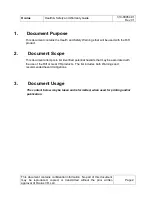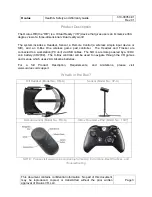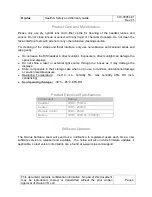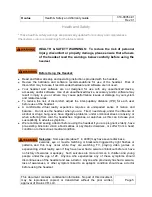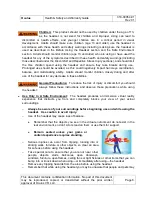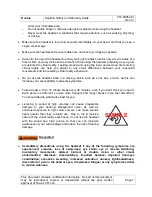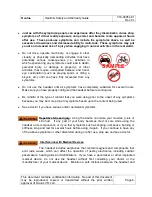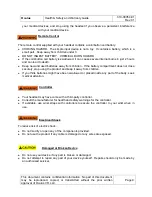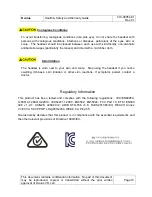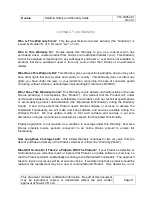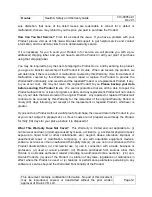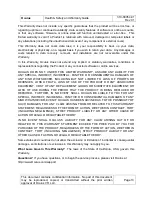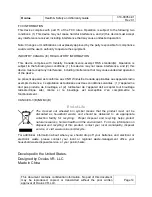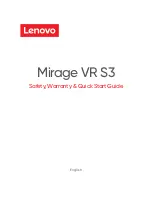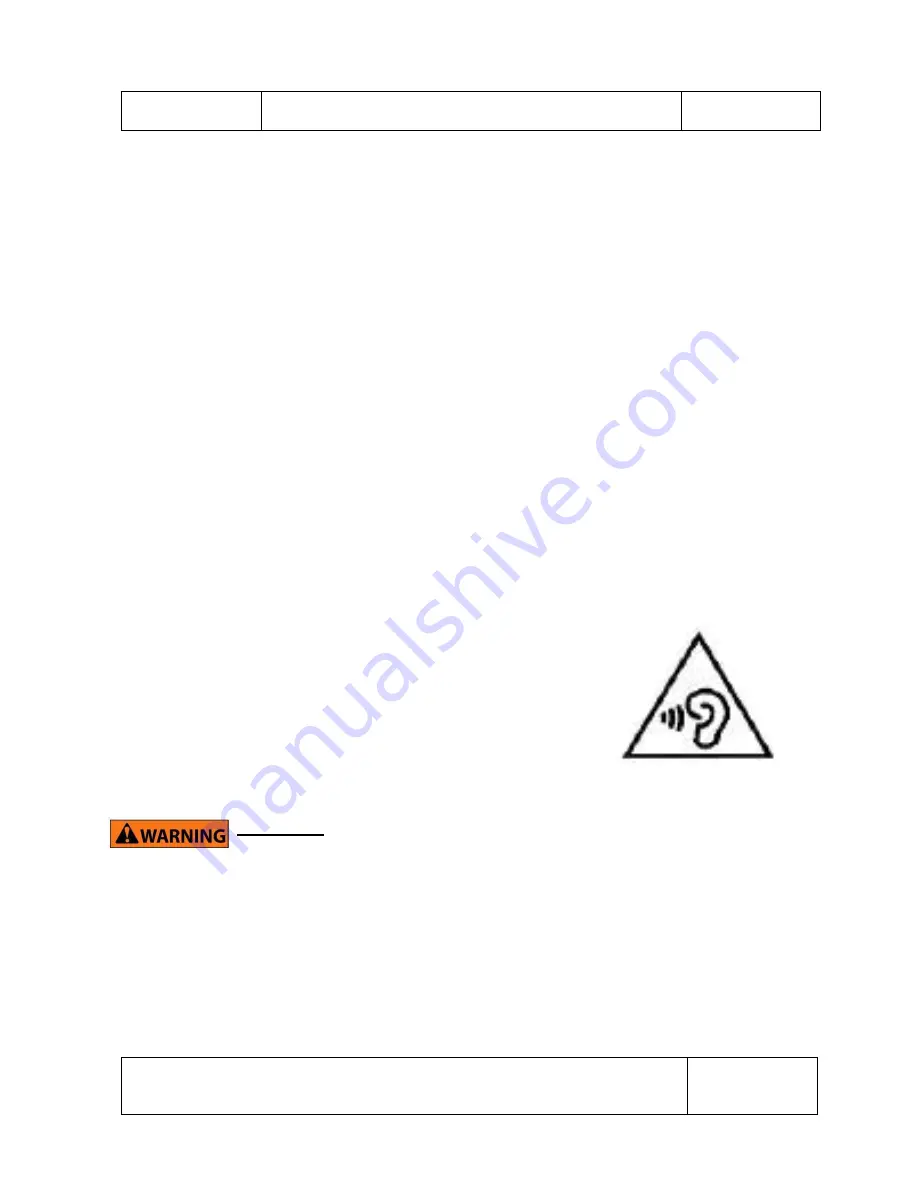
Oculus
Health & Safety and Warranty Guide
310-00054-01
Rev: 01
This document contains confidential information. No part of this document
may be reproduced, copied, or transmitted without the prior written
approval of Oculus VR, LLC.
Page 7
enter your immediate area.
o
Do not handle sharp or otherwise dangerous objects while using the headset.
o
Never wear the headset in situations that require attention, such as walking, bicycling,
or driving.
●
Make sure the headset is level and secured comfortably on your head, and that you see a
single, clear image.
●
Make sure the headset and sensor cables are not choking or tripping hazards.
●
Ease into the use of the headset to allow your body to adjust; use for only a few minutes at a
time at first, and only increase the amount of time using the headset gradually as you grow
accustomed to virtual reality. Looking around and using the input device when first entering
virtual reality can help you adjust to any small differences between your real-world
movements and the resulting virtual reality experience.
•
Do not use the headset while in a moving vehicle such as a car, bus, or train, as this can
increase your susceptibility to adverse symptoms.
●
Take at least a 10 to 15 minute break every 30 minutes, even if you don’t think you need it.
Each person is different, so take more frequent and longer breaks if you feel discomfort.
You should decide what works best for you.
●
Listening to sound at high volumes can cause irreparable
damage to your hearing. Background noise, as well as
continued exposure to high volume levels, can make sounds
seem quieter than they actually are. Due to the immersive
nature of the virtual reality experience, do not use the headset
with the sound at a high volume so that you can maintain
awareness of your surroundings and reduce the risk of hearing
damage.
Discomfort
●
Immediately discontinue using the headset if any of the following symptoms are
experienced: seizures; loss of awareness; eye strain; eye or muscle twitching;
involuntary movements; altered, blurred, or double vision or other visual
abnormalities; dizziness; disorientation; impaired balance; impaired hand-eye
coordination; excessive sweating; increased salivation; nausea; lightheadedness;
discomfort or pain in the head or eyes; drowsiness; fatigue; or any symptoms similar
to motion sickness.
SAMPLE


